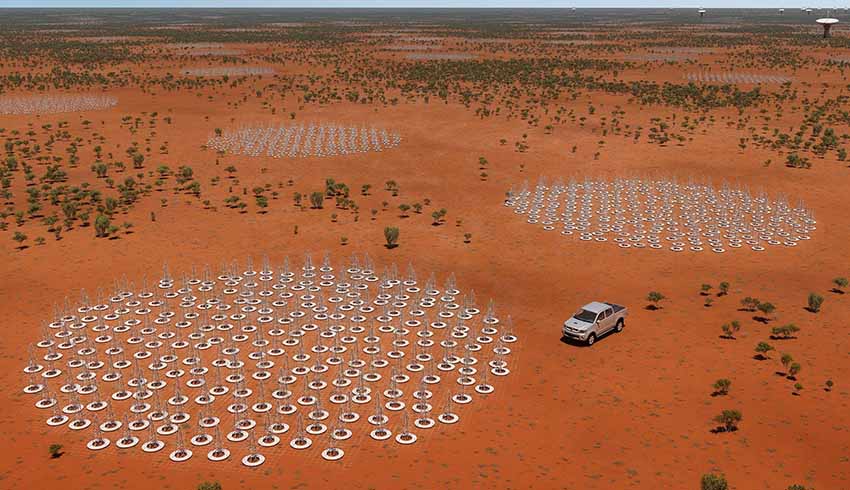
This is the Square Kilometre Array (SKA), an international project funded by 13 nations and consisting of thousands of antennas across the world, with central cores of operation in South Africa and Australia.
By combining signals from the large number of small antennas, SKA is in effect a single giant radio telescope capable of extremely high sensitivity and angular resolution, giving it the ability to determine where a signal originates.
SKA will feature a total collecting area of approximately a square kilometre, which will make it 50 times more sensitive than any existing radio telescopes, allowing astronomers to survey vast areas of the sky in parallel for the first time.
In Australia, the core site, comprising some 130,000 individual antennas, will be at the Murchison Radio-astronomy Observatory at Mileura Station near Boolardy in Western Australia and operated by the CSIRO. Construction will begin next year.
Computer processing of data will be performed around the Pawsey Supercomputing Centre in Perth.
Sciencemag.org reported this week that SKA officials meeting in Shanghai presented designs for array dishes and antennas that would be reviewed in coming weeks.
Philip Diamond, SKA director-general at the organisation headquarters in the UK said he was feeling confident of construction starting in 2021.
The SKA design review committee was expected to make suggestions but no show-stoppers were expected, he said.
SKA was originally envisaged as containing millions of antennae but high cost prompted a more modest but still substantial plan.
SKA will build on the precursor Murchison Widefield Array in WA adding 130,000 antennas, and the Meerkat Array in South Africa, adding 133 additional dishes.
CSIRO director of astronomy and space science Douglas Bock said the two arrays had distinct scientific cases.
Low frequency antennas in Australia s observe radio emissions from pulsars. The dishes in South Africa are tuned to observe at higher frequencies and could trace flows of hydrogen in star and galaxy formation.
Once the review committee approves the design, the next step will be for member countries to ratify a SKA Treaty to create an international legal entity able to collect funds and award contracts.
The Netherlands has already ratified, with Australia expected to sign on early next year and other nations soon after.
Receive the latest developments and updates on Australia’s space industry direct to your inbox. Subscribe today to Space Connect here.












